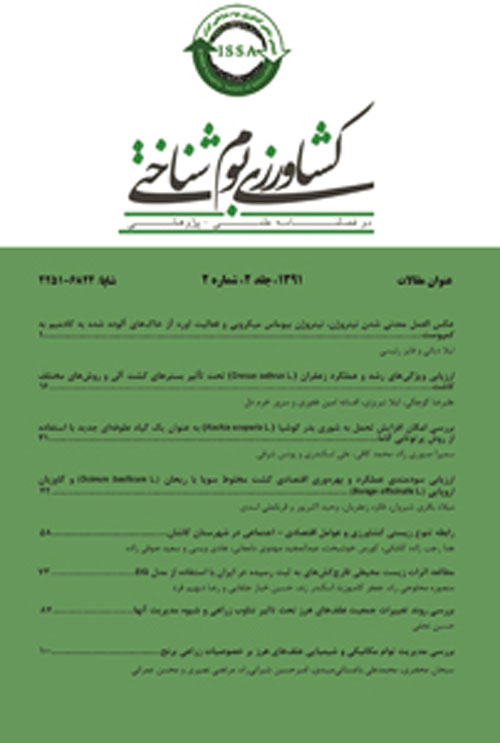Evaluation of weed density, diversity and structure in irrigated wheat fields in different climates of Iran
Author(s):
Abstract:
In order to study weed density and dominance in irrigated wheat fields، 4126 fields were investigated in seven climatic zones (according to the Cilianinov method). 496 weed species from 42 families have been observed within these fields. Slightly semi-arid، humid، semi-humid، mean semi-arid، highly semi-arid، arid and absolutely arid climates had the highest density and mean، slightly and highly semi-arid، humid، semi-humid، arid and absolutely arid climates had the highest diversity (according to the Shannon-viener index)، respectively. Among 496 recorded species، 280 species belonged to five major families; Asteraceae، Poaceae، Fabaceae، Brassicaceae and Caryophyllaceae with 76، 69، 67، 44 and 24 species، respectively: These families had the highest diversity in irrigated wheat fields of Iran. Bindweed (Convolvulus arvensis) and wild oat (Avena ludoviciana) had the greatest abundance at 81. 9 and 59. 9 percent، respectively. In addition، these two weeds have been recognized as assertive and ascendant weeds، respectively. Mean، slightly and highly semi-arid، humid، semi- humid، arid، and absolutely arid climates had the first to sixth ranks on the weed species richness measurement. According to the results، mean semi-arid with highly and slightly semi-arid climates and mean semi-arid with arid climates had the highest and lowest species similarity on the base of the Sorenson index، respectively.
Keywords:
Abundance , Diversity , Shannon , viener index , Species richness , Wheat
Language:
Persian
Published:
Journal of Agroecology, Volume:3 Issue: 2, 2014
Pages:
15 to 34
https://www.magiran.com/p1410753
سامانه نویسندگان
از نویسنده(گان) این مقاله دعوت میکنیم در سایت ثبتنام کرده و این مقاله را به فهرست مقالات رزومه خود پیوست کنند.
راهنما
مقالات دیگری از این نویسنده (گان)
-
The status of achieving the Sustainable Development Goals in 2023
Zeynab Hossein Nejad *,
Iran Nature,


